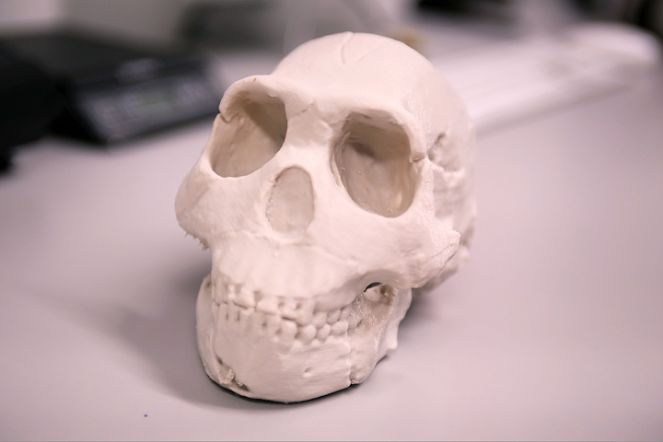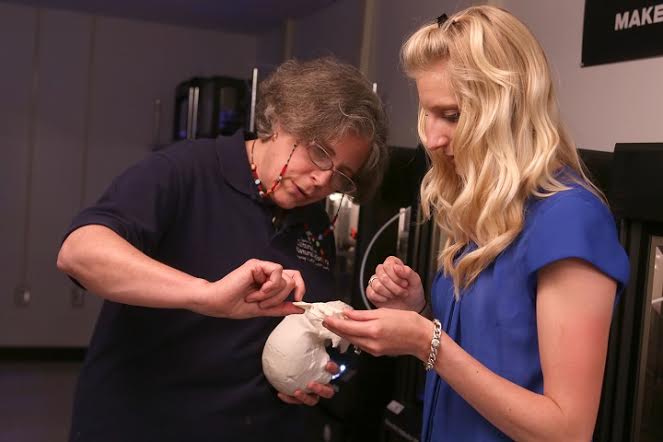 While millennials may be a study in the modern human species all on their own, when it comes to their role in science today, it’s one of taking initiative and strides—as we see now in another project emerging from Central Michigan University. Today the younger generations are eschewing numerous things many of us consider traditional in life, from car payments and mortgages, to the institution of marriage. Willingness to buck the conventional system, combined with a naturally tech-savvy attitude, allows a new mindset to carry over into work too. With the use of 3D printing this is most certainly allowing for a substantial, positive transformation, as well as major disruption.
While millennials may be a study in the modern human species all on their own, when it comes to their role in science today, it’s one of taking initiative and strides—as we see now in another project emerging from Central Michigan University. Today the younger generations are eschewing numerous things many of us consider traditional in life, from car payments and mortgages, to the institution of marriage. Willingness to buck the conventional system, combined with a naturally tech-savvy attitude, allows a new mindset to carry over into work too. With the use of 3D printing this is most certainly allowing for a substantial, positive transformation, as well as major disruption.
This latest is not the first major project we’ve seen from CMU, as we have been following them since the opening of their MakerBot Innovation Center last year, just recently reporting on the story of a sophomore there who made a 3D printed Captain America prosthetic hand for an eight-year-old with moebius syndrome. Originally stating their mission was to center the lab around arts and human services, the faculty and students are certainly following through and building an impressive foundation.
Now, we have a follow-up regarding work by Jennifer Webb, an anthropology student at the university who has been working on a fascinating project we reported on back in April, related to the discovery of the Homo naledi. Inspired by the excavation that was ongoing for two years in South Africa after cavers Rick Hunter and Steven Tucker found an underground room of ancient bones, Webb’s part in the story of Homo naledi began when the team not only released the formal name for this new species, but also began offering the 3D scans online at MorphoSource. A free repository meant for researchers to share information as quickly as possible, MorphoSource is quickly becoming an extensive project-based archive.
Rather than waiting years for archaeological information such as that of Homo naledi to arrive in detail, not to mention counting on budgets for access to fossils and more, scientists can use MorphoSource to download and 3D print incredible replicas of fossils such as the Rising Star cave system find. And they can do this expediently, and with no charge. Webb has been doing just that at the CMU MakerBot Innovation Center, using the prints to investigate her theory that Homo naledi may possibly be much younger than the original estimation of two million years old. The young scientist states that the original casts are still unavailable, but no worries, as she will be printing a total of ten replicas to study by the end of summer, documenting Homo naledi’s relationship to other species.
“The digital scans are available online for the species,” Webb said. “That allows a lot of people to do research. Because we had that access, we thought 3D printing would be a great alternative to casts.”
Due to their location, and in a mass burial, the bones offer clues—and here, a major one is that these Homo naledi fossils serve as indicators of a culture civilized enough to have rituals regarding death, and more. Webb believes this is telling, and as a result hypothesizes that indeed that bones could be younger.
“Bones are important because they tell stories,” Webb said. “You learn to read what they are telling you based on the characteristics that you can look at and feel. It helps you understand things that happened to them in their past.”
The CMU student t is also focused on the teeth of Homo naledi. She studies the following:
- Crowns
- Cusps
- Number of roots
- Wear patterns
These can be compared to more modern humans and their dental characteristics from about 100,000 years ago, with fossils that were found there in the same region. Examination and comparisons between the two cultures will help determine how old those teeth are.
“If the species turns out to be around 2 million years old, then it will be the earliest appearance of the Homo genus that demonstrates such primitive morphology and ritualized behavior at the same time,” Webb said. “If it turns out to be closer to around 1 million years old or younger, it would mean that many different types of ancient humans coexisted at similar times in South Africa than was previously thought.”
 As Webb’s project continues to pick up speed, her supervisor at CMU is also enjoying the rewards of what new technology is beginning to offer in their field. She points out the obvious issue in that fossils are so fragile. Handling them is always precarious, and for that reason, they generally are not shared for quite some time, if at all. With 3D scanning and then 3D printing, the scientists can simply make their own identical replicas. This can be done affordably in their own labs—and best of all, they can handle the 3D printed fossils as much as needed for their studies. If something should happen to one, they just make another. The original fossil is never touched or damaged by others outside of the study.
As Webb’s project continues to pick up speed, her supervisor at CMU is also enjoying the rewards of what new technology is beginning to offer in their field. She points out the obvious issue in that fossils are so fragile. Handling them is always precarious, and for that reason, they generally are not shared for quite some time, if at all. With 3D scanning and then 3D printing, the scientists can simply make their own identical replicas. This can be done affordably in their own labs—and best of all, they can handle the 3D printed fossils as much as needed for their studies. If something should happen to one, they just make another. The original fossil is never touched or damaged by others outside of the study.
“Historically, it has taken up to 20 years for research to be published after a dig site is discovered,” CMU anthropologist Rachel Caspari said. “These are young scientists, however, and they are doing things differently. By making the scans available online, others around the world can be a part of the research. It makes it more egalitarian and can make science work much better.”
“It’s a totally new way of doing science in our field,” says the supervising anthropologist. “If every fossil was scanned, and we could print them all out, we could have the whole human fossil record in front of us relatively cheaply. It would be fantastic.”
We’ve also seen 3D technology affecting other scientific cases, and often as museums are putting together entire skeletons of prehistoric creatures like dinosaurs, from Dreadnoughtus to T. rex. With both 3D scanning and printing technology, scientists are able to recreate missing parts from enormous skeletons, adding to collections and exhibits. Not only that, they are able to educate the public on how 3D printing is positively affecting their fields, even spotlighting which parts were 3D printing within an exhibit.
While essentially there is still no better way to find old bones than to scout, find, and then set up a dig, often quite extensively, today we see that after a find of any size, 3D technology is allowing for a transformation in anthropology and related sciences through the sharing of information around the world, enriching many—rather than just one team for many years—showing some fascinating progress in a modern world driven by ever curious Homo sapiens who seem to be growing more generous with their finds—finally! Discuss further in the 3D Printed Homo Naledi Fossils forum over at 3DPB.com.
[Source: Central Michigan University / All images supplied directly to 3DPrint.com by CMU.]
Subscribe to Our Email Newsletter
Stay up-to-date on all the latest news from the 3D printing industry and receive information and offers from third party vendors.
Print Services
Upload your 3D Models and get them printed quickly and efficiently.
You May Also Like
3D Printing News Briefs, July 2, 2025: Copper Alloys, Defense Manufacturing, & More
We’re starting off with metals in today’s 3D Printing News Briefs, as Farsoon has unveiled a large-scale AM solution for copper alloys, and Meltio used its wire-laser metal solution to...
Etsy Design Rule Change Reduces Selection of 3D Printed Goods
Online marketplace Etsy has implemented a rule change requiring all 3D printed goods on the site to be original designs. The update to the site’s Creativity Standards states, ¨Items produced using...
Siraya Tech Introduces New Elastomer 3D Printing Materials, Including Foaming TPU
California company Siraya Tech, founded in 2019 with a focus on material science, customer focus, and agility, develops high-quality 3D printing materials that meet the needs of creators, hobbyists, and...
3D Printing News Briefs, April 12, 2025: RAPID Roundup
The news from last week’s RAPID+TCT in Detroit just keeps on coming! That’s why today’s 3D Printing News Briefs is another RAPID Roundup of more exciting announcements from the trade...




































